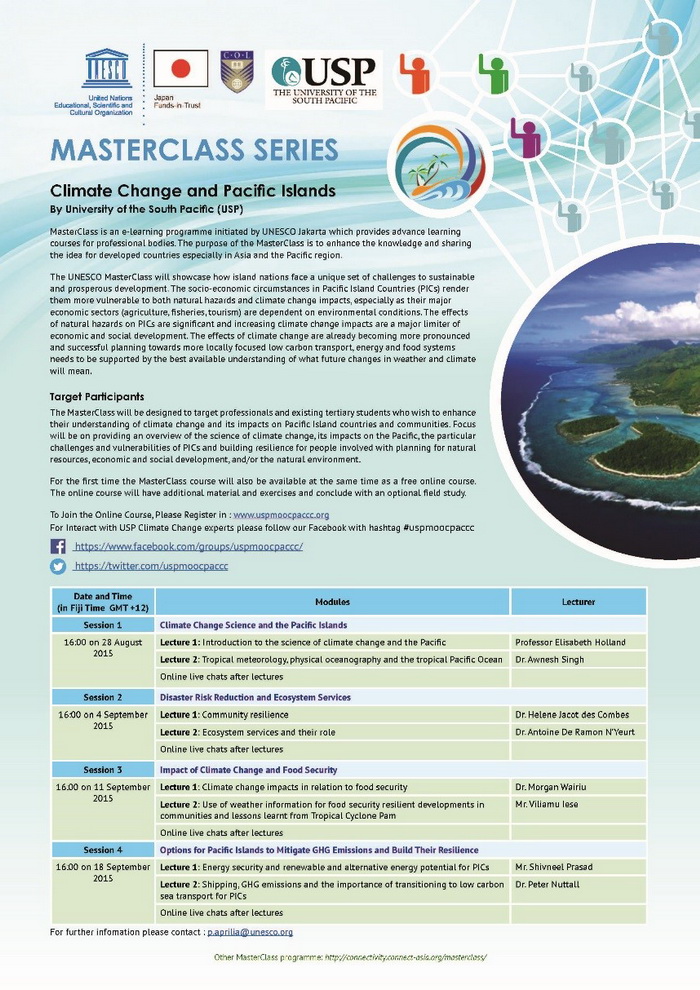MasterClass Series : Climate Change in Pacific Island – University of South Pacific

Climate change has been identified by Pacific Leaders as the greatest threat to the Pacific region. Due to their location in the cyclogenesis region and close to the Pacific Ring of Fire, PICs are highly vulnerable to natural hazards. Based on the international disaster database (EMDAT), natural hazards in the region between 1950 and 2013 affected more than 4.3 million people and generated more than FJ$6 billion damages. During the same period, natural hazards in Fiji affected more than 1.3 million people and generated more than FJ$1.2 billion damages. Out of these natural hazards, about 75% were climatological (heatwave, drought), hydrological (flood, landslide) or meteorological (storm cyclone) in origin for the region and 95% for Fiji. 2014 and 2015 saw the region devastated by numerous climatic events. Tropical Cyclone Pam, one of the strongest storms ever recorded, alone caused an estimated US$250 million of damages to the region.
The effects of climate change are already becoming more pronounced and successful planning towards more locally focused transport, energy and food systems needs to be supported by the best available understanding of what future changes in weather and climate will mean. In order to enhance the resilience of PICs, decision-makers at need access to the best current understanding of how climate in the Pacific is going to change for them to optimize their choices for sustainable transport, energy and food production goals.
